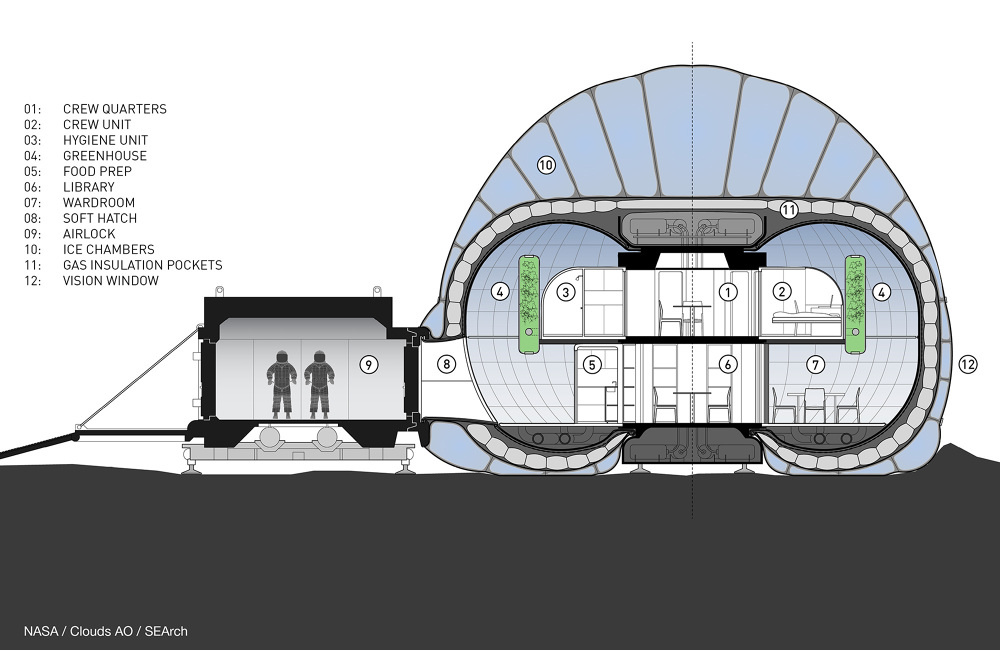Researchers at NASA’s Langley Research Center have released a concept home for astronauts landing on Mars. The plan involves using water ice to make what looks like igloos. They’re dubbed the ‘Ice Home‘.

They actually are an inflatable tube of sorts, which sits like a dome over where the astronauts would be living. Inside of this tube is water, frozen to form a dome over the living space. The entrance will be a mechanical room, allowing for it to be a power source for anything inside, and to keep the water frozen. These homes will work as housing for astronauts, protecting them from extreme temperatures and high-energy radiation.
The group of researchers have a few reasons as to why they decided to use ice. The entire system is very easy to set up with simple robotics, which means that it can be prepared prior to the astronauts’ arrival. Water, as ice, is readily available beneath Mars’ surface, making it simple to gather and use. Water is also excellent at absorbing harmful radiation, of which there is plenty of in space, due to it having a 2/3 composition of Hydrogen (in other words, H2O).

Another advantage is that the tube and ice do allow light in, and completely shield the inhabitants from the dust storms and outside temperatures (Mars temperature ranges between -55C and 20C, so a little bit on the cold side). There is currently the idea of putting a layer of CO2 between the living area and the ice as insulation. This is to counter the inside of the igloo becoming very cold over time. Handily enough, CO2 is also available on Mars.
The Ice Home’s major goal is to protect its inhabitants from the harmful cosmic rays, or energy radiation, which can lead to cancer or radiation sickness. Ice is able to counteract and block these rays from penetrating the surface of the home as seen in the diagram below. Also, the materials of the Ice Home will be able to withstand the brutal terrain of Mars and last for years on end.

However, as it stands, there are a couple of problems holding them back. Like how it would take 400 days for the Ice Home to be deployed, which is at the current size. The size can be increased if they can extract ice at an increased rate.
Despite being in its conceptual stage, the Ice Home is looking like a possible solution to immigrating to Mars. Langley Mars Ice Home principal investigator Kevin Kempton stated: “After months of travel in space, when you first arrive at Mars and your new home is ready for you to move in, it will be a great day,” Indeed, Kevin. It shall be a great day indeed.

